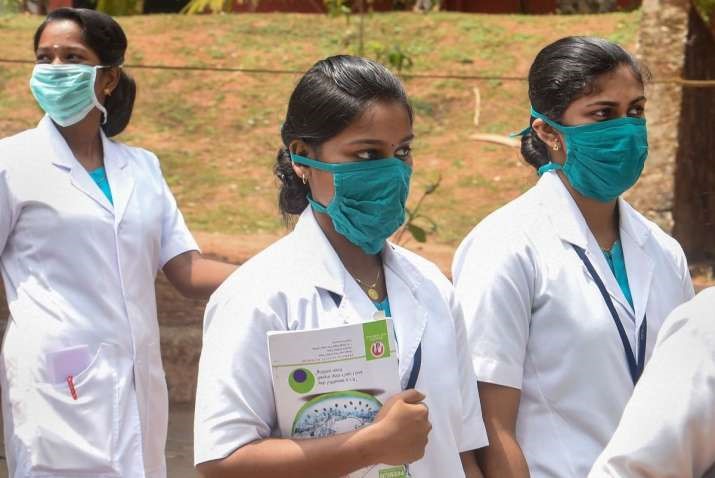
Is NEET driving students abroad to study medicine?

Even as an Indian medical student was tragically killed in a Russian missile attack in Kharkiv city in Ukraine, and as India is frantically trying to evacuate students from the war zone, political parties in Tamil Nadu are using this opportunity to push their anti-NEET agenda.
Tamil Nadu higher education minister K Ponmudy for instance said that the NEET exam is preventing students from getting medical seats in the country combined with the prohibitive cost of medical education are driving them to foreign universities. But is NEET the reason for Indian students to opt to study in “smaller foreign nations”?
Data shared by the Medical Council of India (now National Medical Commission) while replying to an RTI in 2018, showed the number of students who applied for mandatory eligibility certificates to pursue their medical education abroad had gone up.
In 2016-2017, the number was 10,555 and the next year in 2017-2018, it went up to 18,383. And, pertinently, the numbers had gone up despite the fact that MCI made it mandatory for students who wish to study medicine abroad to first clear the NEET. Therefore, it is clearly not the fear of NEET that is forcing Indian students to flock to foreign universities to pursue medical studies.
Though there is a lack of official data from the ministry of external affairs or other related government offices on the number of Indian students studying medicine in universities abroad, overseas educational consultants have estimated that 20,000-25,000 students leave India to study medicine in foreign universities every year.
Also read: Explained: Why Indians flock to Ukraine to study medicine
Lack of medical seats and cost of medical education
According to experts, there are two key reasons why Indian students choose foreign universities to study medicine. One is the lack of medical seats in India and secondly, the high cost of medical education in the country.
Currently, for the academic year (2021-2022), the total number of medical seats in India are 88,120 in 596 government and private medical colleges. This was the data given by Dr Bharati Pravin, minister of state for health in December 2021.
Sixteen lakh candidates apply for these 88,120 seats and 15 lakh students have attempted the NEET, showed data provided by National Testing Agency, New Delhi.
“With such few seats, even the studious students who score good marks in NEET are unable to get admission in Indian colleges. So, they naturally opt for foreign universities. The other reason is that the students can complete their medical education in the foreign universities in half the amount that their counterparts spend here,” said R Suresh Kumar, director, Truematics Overseas Educational Consultants, Chennai.
‘Tried NEET twice, no medical seat’
Shanmugavalli Kasthuri, a first-year medical student in Uzhhorod National University, Ukraine, who recently returned to India after the war broke out, had attempted the NEET twice and had scored 483 marks the second time. However, she was unable to get a medical seat in India and opted to pursue her dream in Ukraine.
“I tried in many private colleges but I was unable to get a seat,” she said, adding that instead of wasting time for another year attempting NEET once again she decided to apply to a foreign university. Last December, she got admission to a Ukrainian university and the classes commenced only on February 14. But unfortunately, the war started, said Kasthuri.
Also read: Govt’s overseas scholarship bars research on caste, gender inequality
Besides struggling to get a medical seat, Kasthuri said that another deterrent for Indian students is the high fees in Indian medical colleges. She added that if a student got a medical seat in a private college under a government quota, he or she would have to fork out ₹ 12 lakh per year. If the same student got a medical seat under management quota, then the fee will run into a few more lakhs of rupees.
“But in countries like Ukraine, one can complete medical education within ₹ 30 lakh to ₹35 lakh, including hostel fees,” pointed out Kasthuri.
The cost factor plays a huge role in forcing medical students to study in foreign universities and this was happening even before NEET, pointed out Avinash, a medical student who recently completed his MBBS in a university in China.
“I moved to China in 2015, i.e., before NEET was introduced. Due to the COVID-19 pandemic, we returned to India but since we had not completed our internship in China, we requested the Indian and Tamil Nadu governments to allow us to do an internship in the hospitals here. After a short legal battle, we are now allowed to do an internship here,” he said.
However, Avinash and other students like him, who returned to India before completing their course due to natural calamities like COVID, have to pay ₹ 3 lakh to the Tamil Nadu Dr MGR Medical University, to do internship in any of the government or private hospitals here.
“But fortunately, the state government has now brought down the fee payable to the university from ₹ 3 lakh to just ₹ 30,000. However, whether we do an internship in a government or a private college, we need to pay a few lakhs of rupees more to the colleges concerned,” added Avinash.
While students like Avinash whose education was affected by COVID have solved their problems, the fate of medical students from Ukraine still hangs by a thread. Theni-based Harish Marugan, a medical student from Ukraine said that as of now, the universities in the country have announced holidays for 20 days.
Subsequently, their second-semester classes are expected to resume online, he said. “We hope, by September this year, we will be able to return to Ukraine and continue our courses offline,” he said in an uncertain tone.


